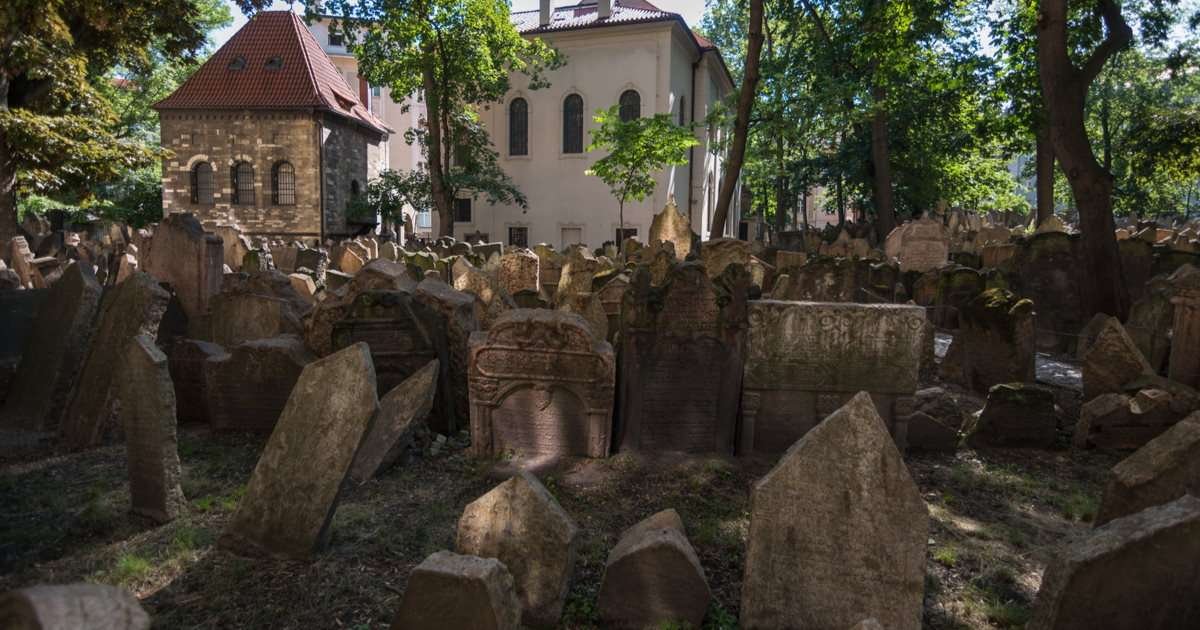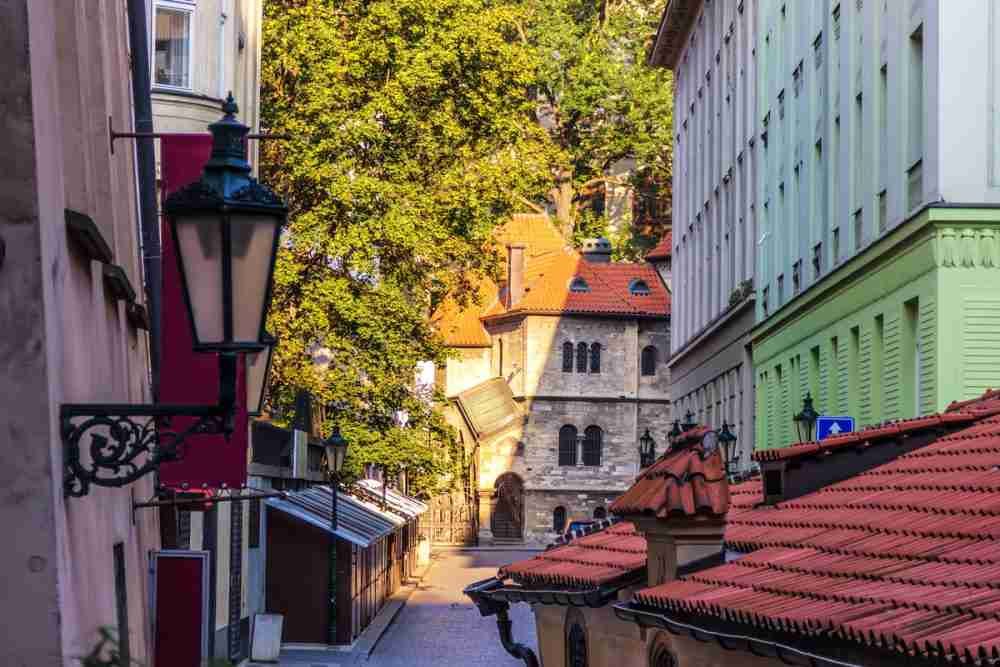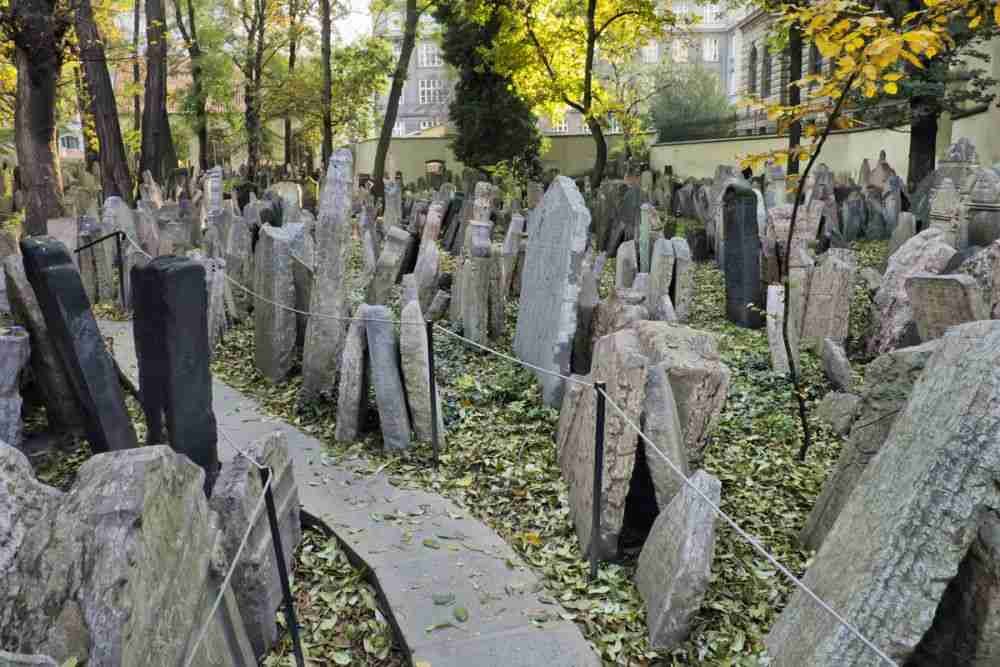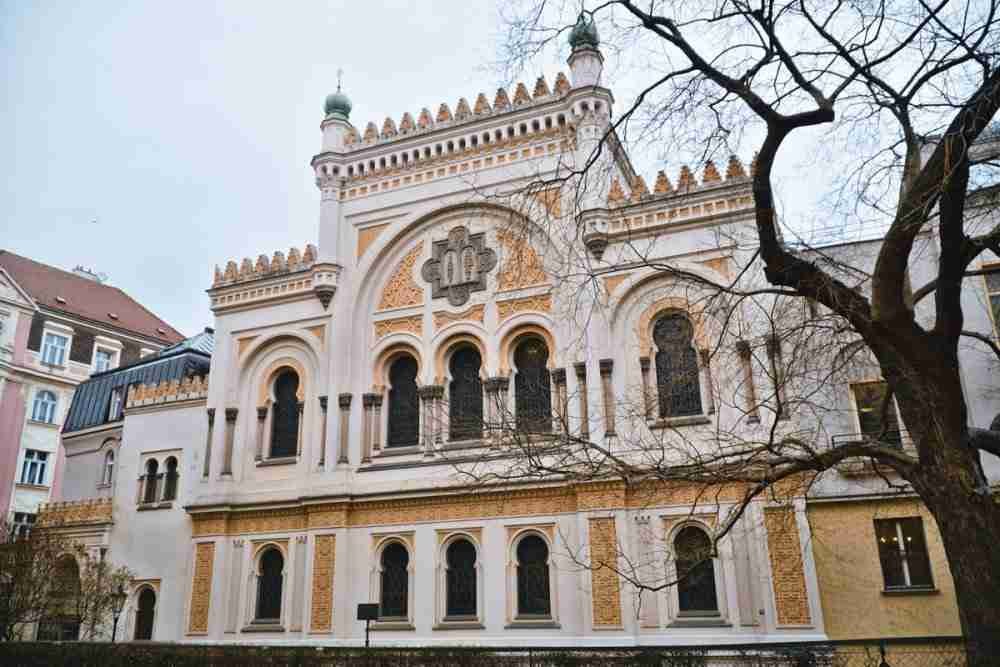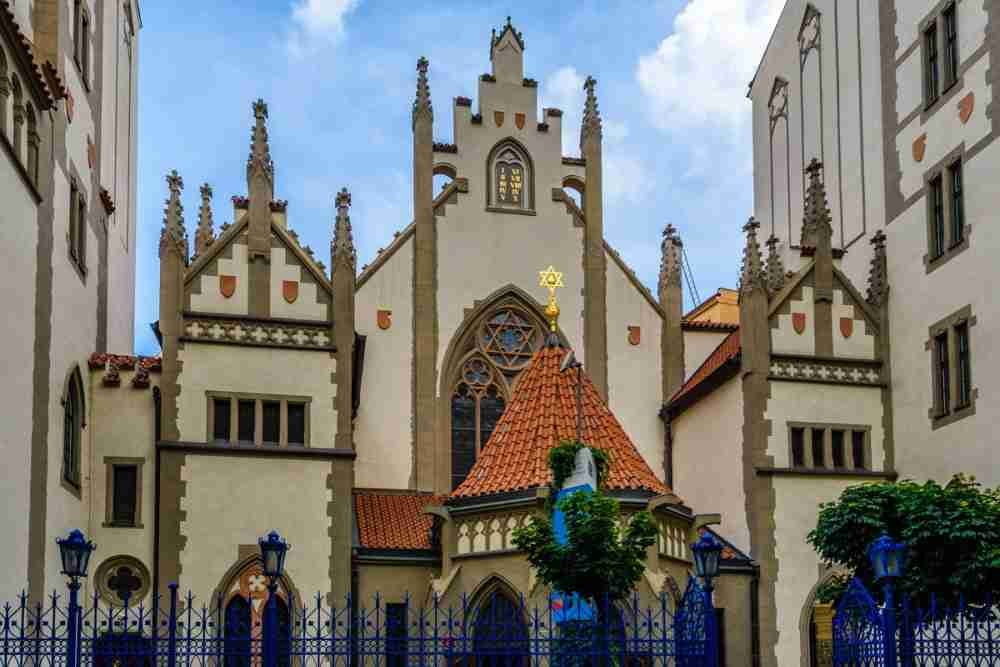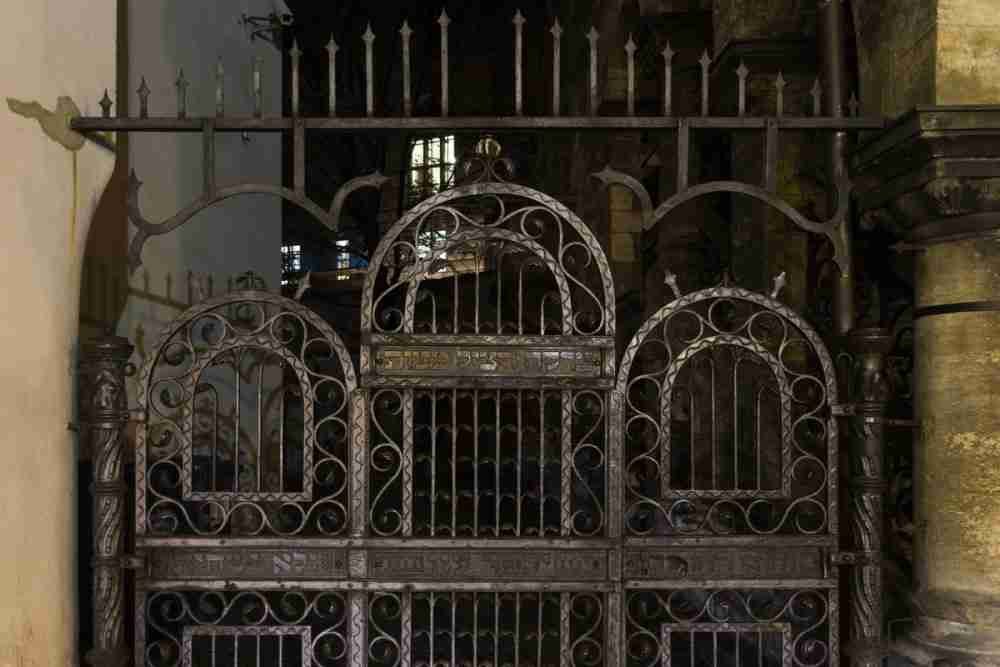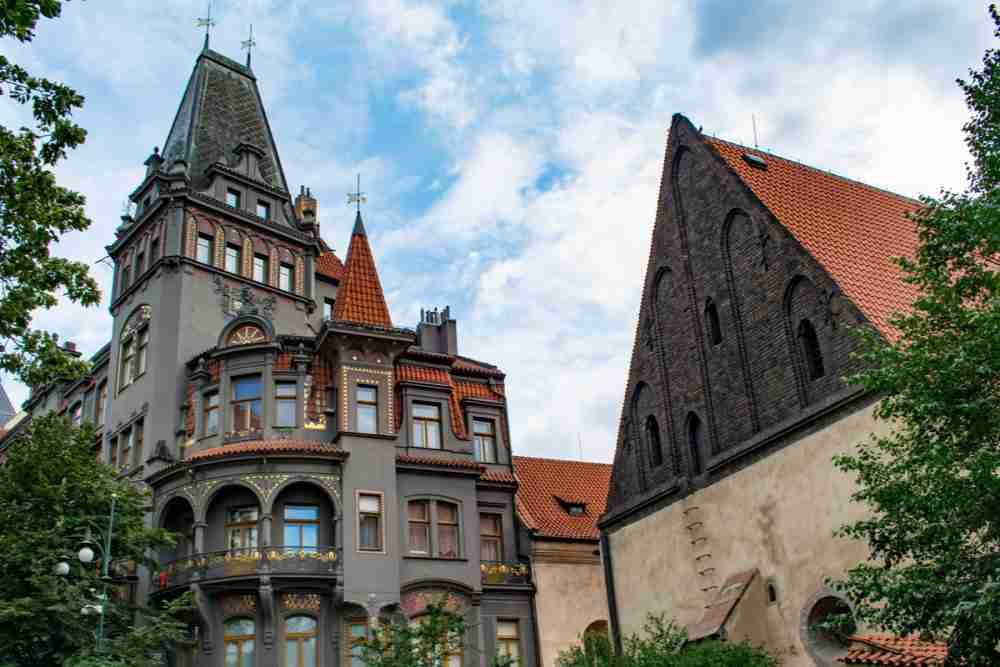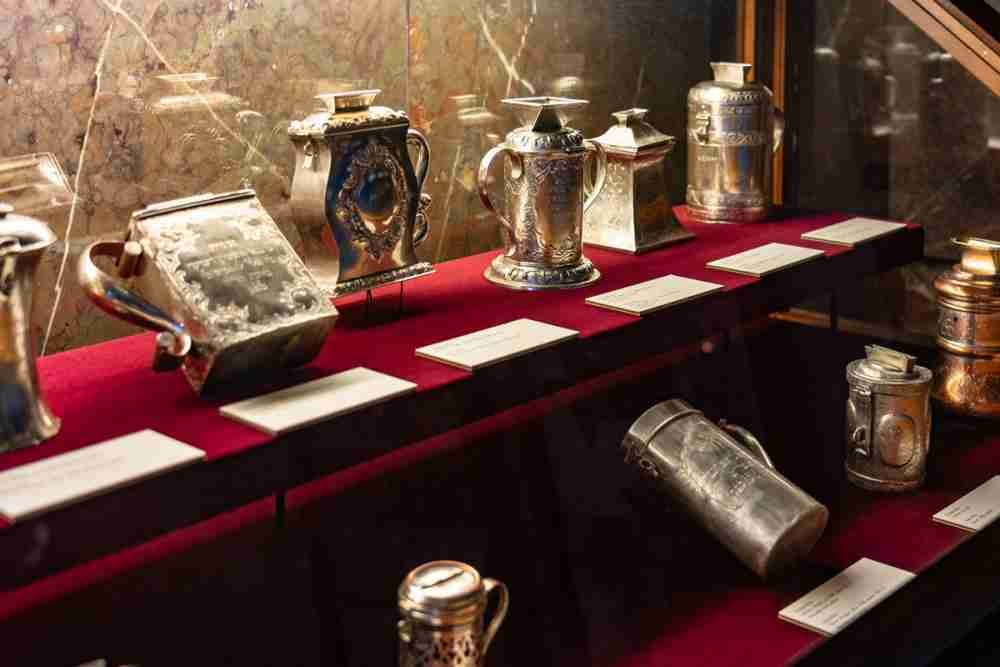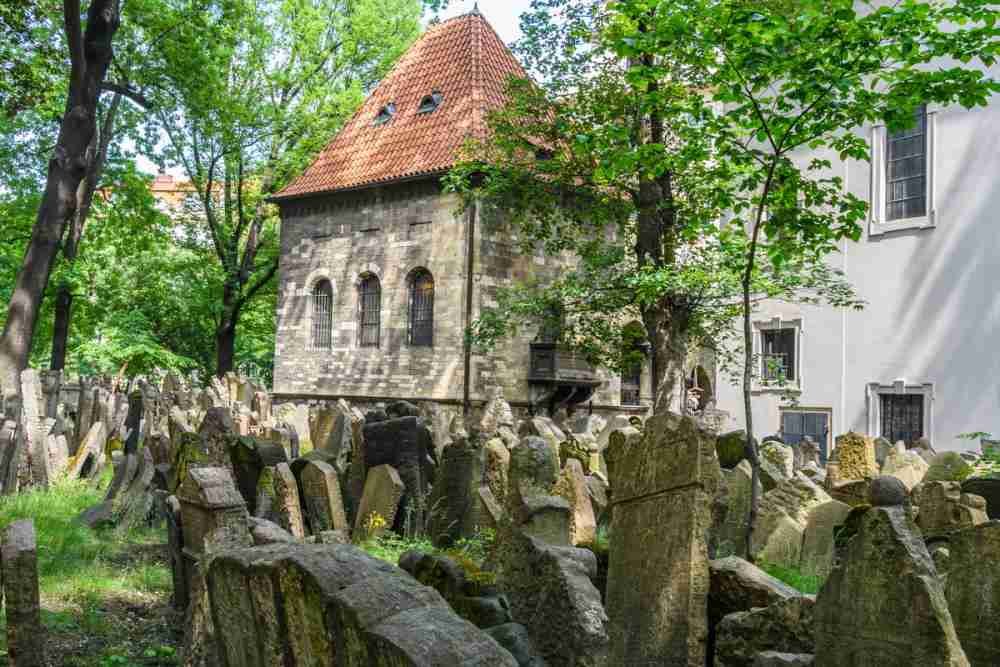The Jewish quarter in Prague was established in the 13th century.
The Jewish Town was developed as a separate ghetto for Jewish people, only there were they allowed to live, work, and bury their dead.
After they were granted citizenship rights in 1848, Jewish people were allowed to settle in other parts of Prague.
Today the Jewish quarter is one of the most expensive and exclusive residential areas in Prague.
This guide will tell you everything you need to know before visiting the Jewish Quarter. This includes the sights, history, tickets and guided tours.
What Can I Do in the Jewish Quarter?
The Jewish quarter is located in the north of the Old Town of Prague.
Today, significant evidence of Jewish life in the city of Prague can be seen in the former ghetto.
The preserved religious buildings and cemeteries are part of the Jewish Museum.
Components of the Jewish Museum
1. Jewish Cemetery
The old Jewish cemetery is one of the most important Jewish cemeteries in Europe. The site is surrounded by a high wall and is located between the Pinkas and Klausen synagogues.
In an area of only 10,000 square meters, 12,000 gravestones have been counted, and it is estimated that the bones of over 100,000 people are buried here. Since the cemetery could not be extended in the ghetto, the dead were buried in up to 12 layers on top of each other, which gives it its hilly appearance.
The oldest grave dates back to 1439, the last burial took place in 1787.
The famous rabbi and scholar Judah Löw, who is said to have created a golem, is also buried here.
2. Klausen Synagogue
This synagogue, built in the early Baroque style and dating back to 1694, is located right next to the Jewish cemetery.
It was the largest and second most important synagogue for the Jewish community in Prague. Today it houses a permanent exhibition from the Jewish Museum dedicated to Jewish traditions and customs.
3. Pinkas Synagogue
Pinkas Synagogue dates back to the 16th century and is located right next to the Jewish cemetery. It is the second oldest synagogue in Prague's Jewish Quarter. In 1959 it was transformed into a memorial for the Jewish victims from Bohemia and Moravia, about 80,000 names are immortalized on its walls.
On the second floor, children's drawings from the Terezín concentration camp are exhibited.
4. Spanish Synagogue
The Spanish Synagogue was built in the Moorish style from 1867 - 1868 on the place where the oldest synagogue, also called "Old School", once stood. A group of Jewish people expelled from Spain found asylum here, hence the synagogue got its name.
It has an imposing dome and extravagant stained glass windows. It is known for its good acoustics, and concerts are held regularly here.
The permanent exhibition is dedicated to the recent history of Jewish people in Bohemia and Moravia.
5. Robert Guttmann Gallery in the Former Jewish Hospital.
Next to the Spanish Synagogue in the building of the former Jewish hospital, built in 1935, is the Robert Guttmann Gallery. It was opened in 2001 and has thematic special exhibitions.
On 80 square meters, it focuses on works by Czech Jewish artists from the late 19th and early 20th centuries.
6. Maisel Synagogue
Maisel Synagogue was built in the 16th century. Today the permanent exhibition shows the Jewish history of Bohemia from the 10th to the 18th century.
Among other things, the exhibition covers the heyday of Prague's Jewish quarter, Jewish guilds, and the history of Jewish scholars, such as the scholar Rabbi Löw, who is said to have created a golem.
7. Ceremonial Hall
The building of the former ceremonial hall and mortuary, built in 1911 - 1912 in the neo-Romantic style, is located in the old Jewish cemetery.
The small, gloomy-looking building was built for the Prague Funeral Brotherhood, which had the task of today's morticians. Today the exhibition shows Jewish traditions and bellies in sickness and death.
8. Old-New Synagogue
The Old New Synagogue is called Staronová Synagoga in Czech and is located in the immediate vicinity of the famous Parizska Street.
It was built around 1270 and is the oldest preserved synagogue in Europe.
It is still used for religious services today, but is open to the public and can be visited from the inside.
There are several myths regarding its name, one of which states that during its construction, remains of an even older synagogue were found, on the foundations of which the new synagogue was built.
In its attic it is said that the dusty remains of a golem created by Rabbi Löw from dust and earth 400 years ago are there.
9. High Synagogue
The High Synagogue is located directly opposite the Old New Synagogue on the second floor of the Jewish Town Hall, which is why it is often referred to as the "Town Hall Synagogue". Its interior contrasts with the contemporary facade design and stands out for its original stucco-decorated lunette vault.
Built in 1568, the High Synagogue has been used in the meantime as an exhibition space of the Jewish Museum. Today it serves as a prayer house for the rabbinate and is used for ceremonial occasions.
It is not open to the public.
10. Jerusalem Synagogue
Another important synagogue in Prague is the Jerusalem Synagogue, but it is not located in the Jewish Quarter, instead it is in the New Town of Prague. From the Jewish Quarter, the Jerusalem Synagogue can be reached within 20 minutes on foot.
It is the youngest and also the largest synagogue in Prague. Its colorful facade, reminiscent of Moorish monuments in Spain, is as striking as the interior decoration in the Viennese Art Nouveau style.
The synagogue is open to the public and can be visited from the inside.
More Attractions
- Museum of Decorative Arts: In the western part of Jewish quarter is the Museum of Decorative Arts, which was built between 1897 and 1901. The building is built in the neo-Renaissance style and is itself a work of art. The first floor displays constantly changing special exhibitions and the exhibition on the upper floor shows European and Czech arts and crafts from the 16th to the 19th century.
- Franz Kafka Birthplace: As was still customary in the 19th century, Franz Kafka's birth took place at home on July 3, 1883. The birthplace, however, fell victim to the redevelopment of the Jewish quarter in 1897, and today, in addition to the name of the square, the only reminder of his birthplace is a concave-arched memorial plaque with a sculpted portrait of Kafka. It dates back to 1965 and is the work of the Czech sculptor Karel Hladik.
- Archive in the Smíchov Synagogue: The Smíchov Synagogue is the only functionalist synagogue in Prague. Originally completed in the Romantic style in 1863, the synagogue was so badly damaged after only 3 years that it could no longer be used. In 1931 it was reconstructed in its present style. Today it is used by the Jewish Museum as an archive.
Admission, Tickets, and Guided Tours
- Tickets: Jewish Quarter tickets are valid for the cemetery and all synagogues except the Old New Synagogue. This requires a separate ticket available on site. Tickets for the Jewish Quarter can be purchased online or at the entrance to Klausova Synagogue.
- Guided Tours: Tours of the Jewish Quarter are available several times a day. They show either the exterior of the synagogues along with their history or the interior.
- Admission: No security check or pre-registration is required to enter the synagogues and cemetery as in other European cities.
Popular Tickets & Tours to the Jewish Heritage in Prague & Surroundings:
- Jewish Quarter Walking Tour with Admission Tickets
- Tickets for Jewish Quarter Monuments + Guided Tour
- Guided tour of Prague's Old Town and the Jewish Quarter
- Best of Prague: City tour by boat, bus and on foot
- Prague: Classical Concert in the Spanish Synagogue
- Terezín Concentration Camp: Small group tour from Prague
How Do I Get to the Jewish Quarter?
The Jewish Quarter is located in the center of Prague. It is walking distance from the Old Town Square with the Town Hall. Its about 750 meters away and within 10 minutes walking distance.
The nearest metro stop is Staroměstská, reachable by metro line A, Green Line.
History of the Jewish District
The Jewish District was developed as a separate ghetto for Jewish people. There were neither sewage systems nor sanitary facilities. Only there the Jewish population was allowed to live and work. They also had to bury their dead here.
After they were granted civil rights in 1848, Jewish people were allowed to settle in other parts of the city. Most of the wealthy Jewish people then moved out of the ghetto and the residential buildings fell into disrepair. Between 1893 and 1913, many were demolished due to increasing slum conditions.
At the end of the 19th century, construction of new Art Nouveau buildings began, following the example of Paris, and Paris Street, now the most luxurious shopping street in Prague, became the central axis of the neighborhood.
The preserved religious buildings and the cemetery are today assigned to the Jewish Museum, which is now one of the largest Jewish museums in the world with about 140,000 artifacts.
At the beginning of the 18th century, a quarter of Prague's population was Jewish. Emperor Joseph II's Edict of Tolerance guaranteed religious freedom, and the quarter was renamed Josefov after him in 1850.
Reinhard Heydrich
Reinhard Heydrich, a feared SS leader in charge of the "final solution" to the Jewish problem, did not destroy the Jewish quarter in Prague, instead he planned on turning it into a "museum of a perished race".
Reinhard Heydrich died on June 04, 1942, as a result of an assassination attempt made on him by Czech resistance fighters on May 27, 1942.
Conversion Into a Museum
The museum, founded in 1906, was closed in 1939 with the German occupation of Bohemia and Moravia. Unexpectedly, the establishment of a Jewish Central Museum was pushed by the Eichmann department in 1942. It was to display collections of confiscated, sacred Jewish objects. As part of the establishment of the museum, even synagogues were restored and incorporated into the museum.
The Jewish population hoped to save their religious objects from destruction by the Nazis.
The motives of the Nazis are unclear, as most of the records were destroyed by the SS before they left Prague. However, studies suggest that the museum was established for the internal training of SD cadres.
Contact
- Address: U Staré školy 141/1, 110 00 Staré Město, Prague
- Public Transport: Metro line A, Green line, Staroměstská station
- Opening Hours: For exact opening hours, please refer to the Jewish Museum website.

